#eastern bluebird chicks
Text
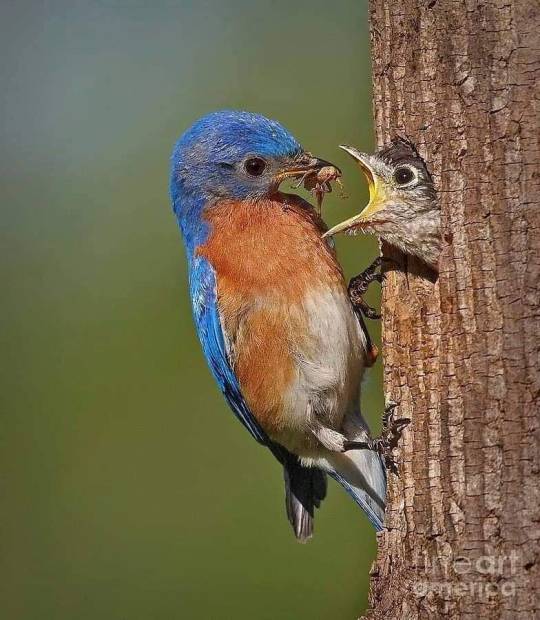
Eastern Bluebird (Sialia sialis) feeding chick. Photo: Susan Candelario on Fine Art America.
1K notes
·
View notes
Text
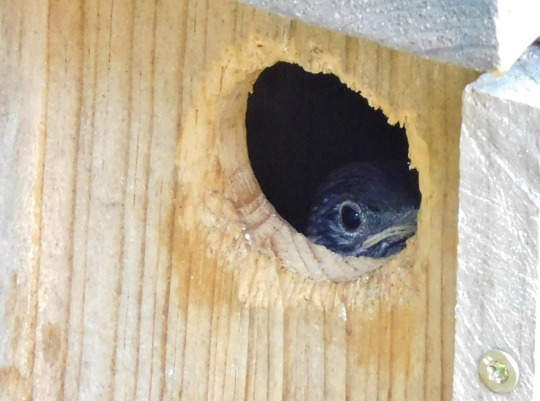




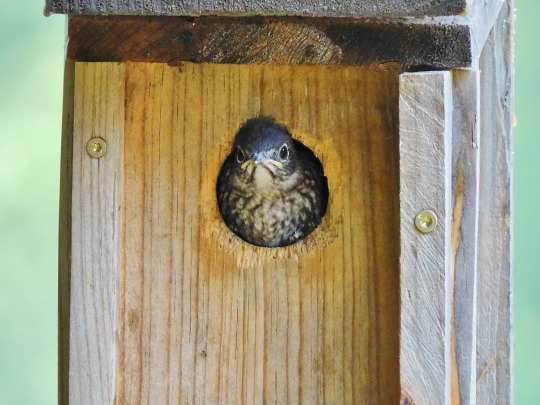


The Eastern Bluebird chicks will soon be fledging...
#nature#bird house#wildlife photography#wild birds#eastern bluebird#nature photography#bluebirds#nestling#fledgling
2 notes
·
View notes
Text
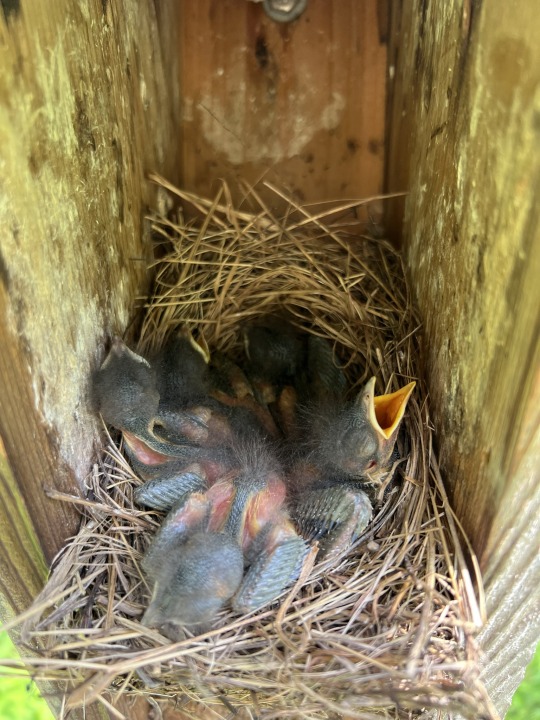
It’s a little warm in the nest box for these Eastern Bluebird chicks. This is our first brood for the 2022 nesting season.
2 notes
·
View notes
Text
Bird Eggs White with Brown Spots: Nature's Artistic Masterpieces

Bird eggs, with their myriad shapes, sizes, and colors, are a marvel of nature's craftsmanship. Among the various patterns and hues that adorn these delicate treasures, one particular design stands out – eggs that are white with brown spots. In this article, we delve into the artistry of nature's canvas and explore the intriguing world of bird eggs featuring this exquisite coloration.
A Palette of Possibilities
Birds, with their incredible diversity, have evolved a stunning array of eggshell colors and patterns. While some lay eggs in solid colors or subtle pastels, others opt for striking designs. Eggs with brown spots on a white background fall into the latter category.
The Science Behind the Spots
The spots on bird eggs serve a dual purpose – camouflage and protection. The speckled pattern helps conceal the eggs from predators and blends into their surroundings. Additionally, the spots can vary in size and distribution, making each egg unique.
Who Lays Eggs with Brown Spots?
Numerous bird species around the world produce eggs with this captivating pattern. Some well-known examples include:
House Sparrow (Passer domesticus)
House Sparrows, often found in urban areas, lay small, white eggs adorned with tiny brown speckles. These spots help them blend into their nest environments. It is a common bird that is easily recognizable and widely found across many parts of the world.
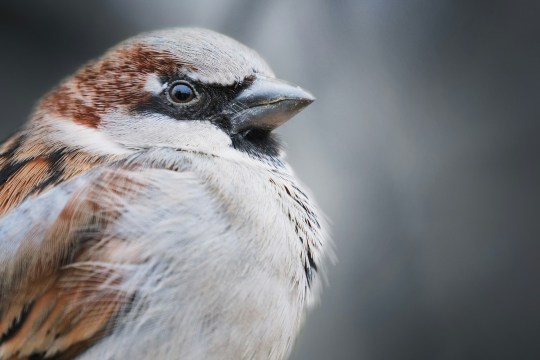
Here's some detailed information about them, especially focusing on their eggs:
Physical Description: House Sparrows are small birds, typically about 16 cm (6.3 inches) in length. They have a stout body, a rounded head, and a robust, conical beak. The males usually have a gray head and a black bib, while females and young sparrows are more of a brown and gray color with no black markings.
Habitat and Distribution: These birds are highly adaptable and can live in a variety of habitats, but they are most commonly found in urban and suburban areas. Originally native to parts of Europe and Asia, they have been introduced to many other parts of the world, including North America, Australia, and Africa.
Behavior and Diet: House Sparrows are known for their sociable nature. They often gather in large flocks and can be seen feeding together. Their diet mainly consists of seeds and grains, but they are opportunistic feeders and will also eat insects and scraps of human food.
Breeding and Nesting: House Sparrows are known for their versatility in nesting. They often build their nests in the nooks and crannies of houses, as well as in trees and bushes. The nests are made from grass, feathers, paper, and other materials.
Eggs: Regarding their eggs, House Sparrows typically lay white eggs with brown spots. The size of the egg is about 20 mm x 15 mm (0.79 inches x 0.59 inches). A typical clutch consists of 3 to 5 eggs.
Incubation and Fledging: The incubation period for House Sparrow eggs is about 10 to 14 days, and it's usually the female who incubates the eggs. The hatchlings are altricial, meaning they are born blind and without feathers. Both parents feed the chicks, and they fledge (leave the nest) about 14 to 16 days after hatching.
Conservation Status: Although House Sparrows are abundant and often considered pests in many areas due to their adaptability and large populations, in some parts of the world, notably parts of Europe, their numbers have been declining due to changes in urban environments and farming practices.
House Sparrows play an interesting role in the ecosystems they inhabit, often influencing local bird populations and competing with native species. Their ability to thrive in human-altered landscapes makes them one of the most recognizable bird species around the world.
Eastern Bluebird (Sialia sialis)
Eastern Bluebirds, known for their stunning azure plumage, lay eggs with pale blue shells adorned with subtle brown markings. It is a small North American songbird, admired for its beautiful colors and sweet song.

Here are some detailed aspects about them:
Physical Description: Eastern Bluebirds are medium-sized, mostly ranging from 16 to 21 cm (6.3 to 8.3 inches) in length. They have a distinctive royal blue plumage on their back and head, and a rusty or brick-red color on their throat and breast. Females are less brightly colored than males, with more of a grayish tone mixed with blue and orange.
Habitat and Distribution: These birds are found in open country across eastern North America and south as far as Nicaragua. Habitats preferred by Eastern Bluebirds include fields and open areas with scattered trees, orchards, and suburban areas. They are often seen perching alone on wires or posts.
Behavior and Diet: Eastern Bluebirds are insectivorous and feed mainly on insects and other invertebrates. During the fall and winter, they shift more to eating small fruits and berries. They are known for hunting by dropping to the ground onto insects from a perch.
Breeding and Nesting: Eastern Bluebirds are cavity nesters. They often use abandoned woodpecker holes or nest boxes. The nests are built by females and are made of grass and sometimes pine needles and other plant materials.
Eggs: The eggs of the Eastern Bluebird are pale blue or, occasionally, white, without any spots. Each clutch usually contains about 4 to 5 eggs.
Incubation and Fledging: The female incubates the eggs for about 14 to 16 days. The young are altricial at birth, meaning they are blind and featherless. Both parents feed the chicks. The young fledge (leave the nest) approximately 15 to 20 days after hatching.
Conservation Status: The Eastern Bluebird was once in decline, due to habitat loss and competition for nesting sites with the House Sparrow and European Starling. However, conservation efforts, including the provision of nest boxes, have helped their numbers increase.
Eastern Bluebirds are often a symbol of happiness and cheerfulness in American culture. Their recovery from near-threatened status is a success story for conservationists and bird lovers. They continue to delight people with their presence and song in their native habitats.
Northern Mockingbird (Mimus polyglottos)
Northern Mockingbirds produce creamy-white eggs adorned with fine brown spots. Their intricate nests are often concealed within shrubs. It is a well-known and widely recognized bird species, particularly famous for its vocal abilities.

Here's some detailed information about the Northern Mockingbird:
Physical Description: Northern Mockingbirds are medium-sized birds, generally measuring about 23 to 28 cm (9 to 11 inches) in length. They have a slim, streamlined body, long legs, and a long tail. Their plumage is primarily gray and white. The wings have white patches which are visible in flight.
Habitat and Distribution: These birds are native to North America and can be found in the United States, Mexico, and parts of Canada. Northern Mockingbirds prefer open areas with sparse vegetation, including suburban and urban settings, parks, gardens, and forest edges.
Behavior and Diet: Known for their singing ability, male Northern Mockingbirds can sing over 200 different songs, including imitations of other birds and even mechanical noises. They are omnivorous, feeding on insects, berries, and seeds. They are often observed foraging on the ground.
Breeding and Nesting: Northern Mockingbirds are monogamous during the breeding season. They build nests using twigs, leaves, grass, and other materials, usually in shrubs or trees. The nest building is primarily done by the female.
Eggs: The eggs of the Northern Mockingbird are light blue or greenish, with brown spots. A typical clutch contains 2 to 6 eggs.
Incubation and Fledging: The incubation period lasts about 12 to 13 days, and it is the female that incubates the eggs. The young are altricial at birth. Both parents feed the chicks, and the young leave the nest about 11 to 12 days after hatching, though they are still cared for by the parents for some time after fledging.
Conservation Status: The Northern Mockingbird is listed as of Least Concern by the IUCN. It is a common species with a stable population trend. However, like many birds, they are affected by habitat loss in some areas.
The Northern Mockingbird's ability to mimic a vast array of sounds, along with its adaptability to various environments, makes it a fascinating and prominent bird in its natural habitat. Its cultural significance is notable, being the state bird of several U.S. states and a frequent subject in literature, music, and folklore.
European Starling (Sturnus vulgaris)
European Starlings lay eggs that are pale blue-green with small brown speckles. These cavity-nesting birds have adapted to various habitats.It is a small to medium-sized passerine bird that is notable for its iridescent plumage and its remarkable ability to mimic sounds.

Here's a detailed overview of the European Starling:
Physical Description: European Starlings are about 20 cm (8 inches) long and have a stout build. Their plumage is glossy and iridescent, featuring a range of colors from green to purple, depending on the light. In the winter, their feathers are tipped with white, giving them a speckled appearance, which changes to a more uniform glossy sheen in the summer. They have a pointed bill that is dark in winter and yellow in summer.
Habitat and Distribution: Originally native to Eurasia, European Starlings have been introduced to numerous other regions, including North America, Australia, New Zealand, South Africa, and elsewhere. They are highly adaptable and can thrive in a wide range of habitats, including urban areas, farmlands, and open woodlands.
Behavior and Diet: European Starlings are gregarious birds, often seen in large flocks. They are known for their aerial displays, especially before they roost in the evenings. Their diet is varied and includes insects, fruits, seeds, and human-provided scraps.
Breeding and Nesting: Starlings are cavity nesters, often occupying holes in trees, but also readily using nest boxes or gaps in buildings. The nests are made from grass, leaves, and twigs. They can be quite aggressive in securing nesting sites, often displacing other cavity-nesting birds.
Eggs: The eggs of the European Starling are pale blue or greenish-white and usually number between 4 and 6 per clutch.
Incubation and Fledging: The female incubates the eggs for about 12 days. The chicks are altricial, meaning they are born blind and featherless. Both parents feed the chicks, which fledge about 21 days after hatching but may remain dependent on their parents for a further 2 weeks.
Conservation Status: In its native range, the European Starling is considered of Least Concern by the IUCN, though there are indications of population declines in parts of Europe. In introduced regions, they are often considered pests due to their impact on native species and agriculture.
European Starlings are notable for their vocal mimicry, capable of imitating a wide variety of sounds, including the songs of other bird species, alarms, and machinery. Their adaptability to human-modified landscapes has contributed to their widespread presence and the complexities associated with their management in non-native regions.
The Evolutionary Advantage
The evolution of speckled eggs is a fascinating example of nature's ingenuity. The spots provide an evolutionary advantage by helping eggs blend into their surroundings, making them less conspicuous to potential predators.
Aesthetic Appeal
Beyond their functional role, eggs with brown spots captivate our imagination. They are nature's miniature masterpieces, offering a glimpse into the intricate design work that goes into each bird's reproductive process.
Conclusion
Bird eggs with a white background and brown spots are not only a testament to nature's artistry but also a marvel of adaptation. These exquisite patterns serve as both camouflage and protection for the fragile embryos within. As we marvel at the beauty of these eggs, let us also appreciate the remarkable evolutionary journey that has led to their creation, a testament to the intricate balance of life in the avian world.
FAQs
What bird lays white eggs with brown spots?
Various bird species, including House Sparrows and Eastern Bluebirds, lay white eggs with brown spots.
What are the brown spots on egg whites?
The brown spots on eggshells serve the dual purpose of camouflage and protection, helping eggs blend into their surroundings and evade predators.
What lays brown spotted eggs?
Numerous bird species worldwide produce brown spotted eggs, showcasing the diversity of avian reproduction.
Why do bird eggs have spots?
Bird eggs have spots to provide camouflage and protection, helping them avoid detection by potential predators and ensuring the survival of the species.
Read the full article
0 notes
Text
What American Birds in Orlando, Florida Use Bird Houses?

Hey bird lovers! Ever wonder which birds in Orlando, Florida, love hanging out in birdhouses? Let's find out!
First up, meet the Eastern Bluebird. These beauties love cozy homes. If you've got a birdhouse, they might move in! Bluebirds are small and have stunning blue feathers. They're easy to spot and super fun to watch.
Next, say hello to the Purple Martin. These birds are the largest type of swallow in North America. They love living in birdhouse colonies. So, if you have more than one birdhouse, they might all get filled with Purple Martins!
Don't forget about Chickadees. These tiny birds are super cute and love small birdhouses. They're black and white and have a unique call that sounds like their name. If you hear "chick-a-dee-dee-dee," look for them near your birdhouse.
Now, let's talk about House Wrens. They're small, brown, and super energetic. House Wrens will live in almost any birdhouse. They love to sing, and their songs are really pretty.
Lastly, there's the Carolina Wren. These birds are a bit bigger than House Wrens. They have bright, chestnut-brown feathers. Carolina Wrens like birdhouses that are well-hidden in bushes or vines.
So, if you're in Orlando and have a birdhouse, keep an eye out for these feathered friends. They might just become your new neighbors!
Remember, different birds like different types of houses. Some like big ones, some small. It's like people – everyone has their own style!
Happy birdwatching!
0 notes
Photo

Eastern Bluebird Chick https://ift.tt/ufxVtGy
0 notes
Text
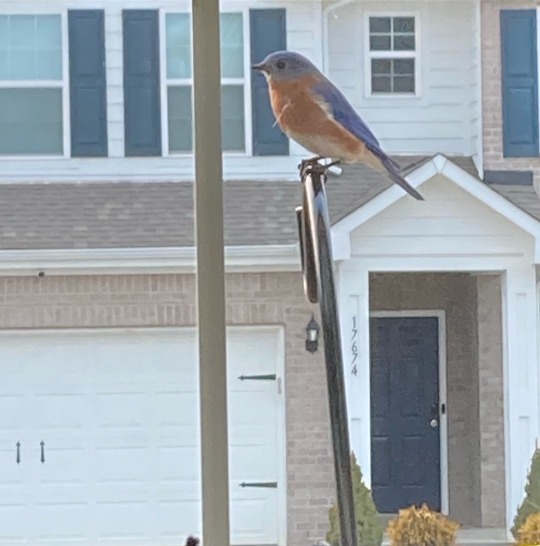
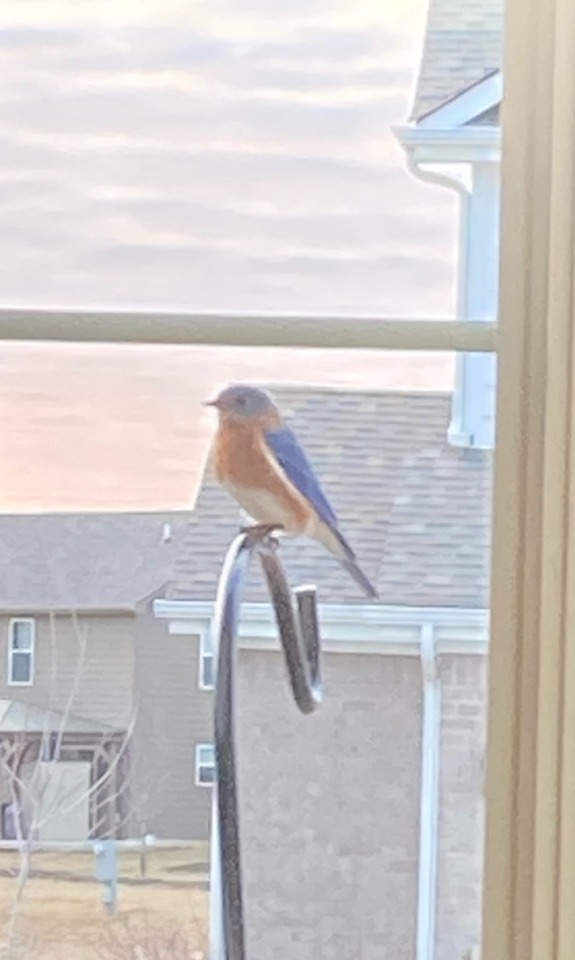
Sialia sialis (Eastern Bluebird)
The eastern bluebird is part of the Thrush family. It can be found east of the Rocky Mountains from southern Canada, to the South Eastern states, to Nicaragua. They tend to breed in semi-open habitats such as forest clearings and farm country.
This bird eats insects such as crickets, grasshoppers, and beetles, as well as berries. They lay 4-5 pale blue (sometimes white) unmarked eggs, and both parents typically feed and take care of the chicks.
I’m early American colonial times, the eastern bluebird was also known as the Blue Robin, and was considered with the coming of spring.
0 notes
Text
May 2021: Happy Mother’s Day
The Mother’s Day card our dogs got for my queen:

Today’s strawberry harvest:



I went over to my mom’s to deliver her Mother’s day gift & snapped a couple of shots of the Eastern Bluebird chicks in one of her bird houses:


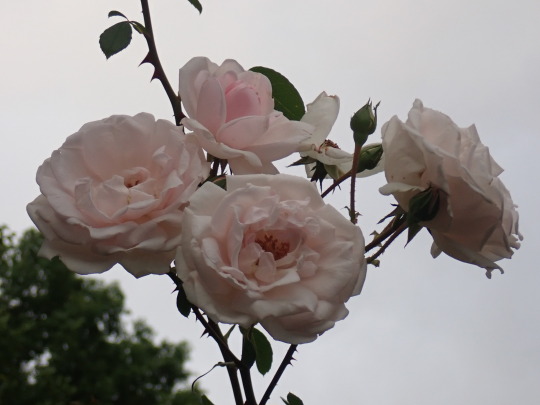
It stormed off & on all day. They had a tornado touch down in the county just north of us where one of my cousins lives:

Jet nearly lost in the clouds:


Maiden, Mother & Crone:

Our golden jasmine has finally started to take off after the transplanting earlier this year:





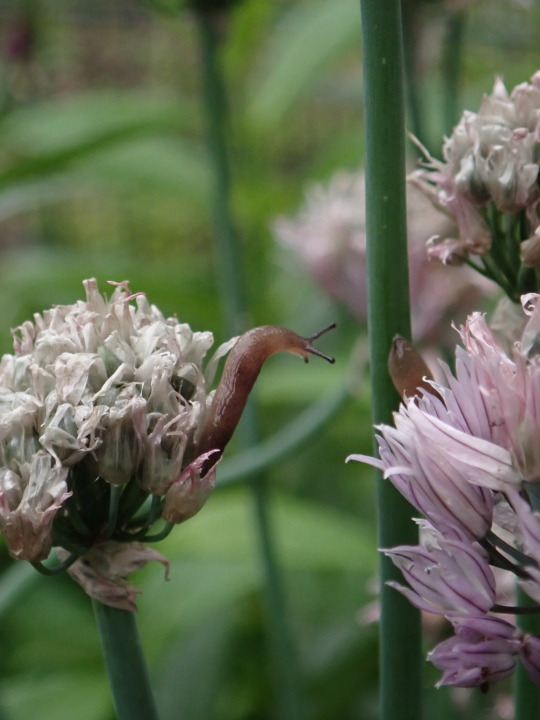

#mother's day#garden#backyard garden#flowers#strawberries#spirea#tiny bee#mock orange#beetle#eastern bluebird#eastern bluebird chicks#roses#storm clouds#stormy day#airliner#golden jasmine#hostas#new guinea impatiens#chive blossoms#slug#slugs#sunset#dusk#life in memphis#lady beetle larva#hairy vetch
5 notes
·
View notes
Photo
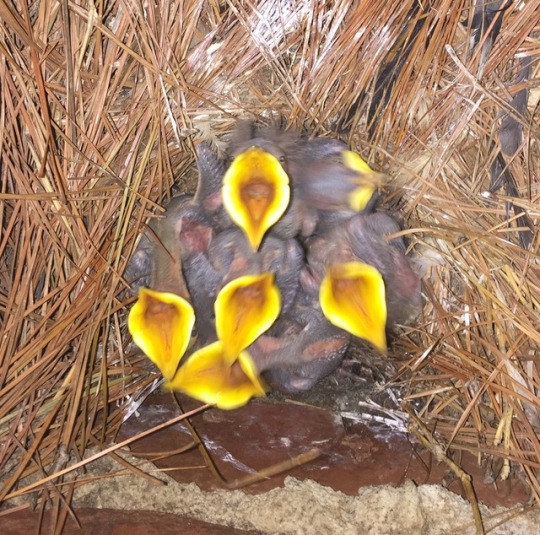
Today’s birds are a whole nest of Eastern Bluebirds.
890 notes
·
View notes
Text
Social Saturday

I will save you all by not sending out questions on this Saturday. Instead, I’ll hand out some random information.
I’ve been working on two different fics, as some of you know. One is Monster In The Storm, the fic where Gideon beats up his father for sleeping with his mother and the Gold family as a whole become heroes. The other isn’t titled yet and isn’t anywhere near completion. I know I said I wanted to finish fics for Camp NaNo, but here’s what happened: I listened to a writing podcast and was struck with inspiration. So you now get to watch me try and balance the two. Not going too badly, really. You’ll see that on Wednesday, with the forest I share.
While I’ve been working, I’ve been listening to this playlist on spotify to help me get into the mood for what is to come. I didn’t create this one, but I thought I’d share since I’m enjoying it so much.
Other things you won’t necessarily know about me: I live on multiple acres of woodland and my yard is registered as a natural animal habitat. Easy enough to do around here, you simply need to provide food, water, and shelter for animals. Well in one of those shelters we have a bluebird’s nest and it seems we are going to have five new members of our wild family soon...

Mother has been happy enough to let me check on the nest and usually allows me to come quite close before flying away. Now, before anyone gets all tied up in knots about this, bluebirds are very tolerant of humans and most of the birds around us (of every species) are so comfortable with our being near them that they will all but land on us when we are trying to fill up their feeders. Of the many species we have here, the hummingbirds are the only ones who won’t come close. They will stay far in the distance and scream at us until we are out of their way. Unfortunately that usually means no socializing on the porch in the summer.
We have what we believe is a wren in the other bird box, but that reasoning is based only on the fact that the nest is ball-like and domed rather than open at the top like this one. No visible evidence of mother or chicks is easily noticed inside, so we won’t really know unless we are super careful watching. The wrens aren’t as happy to have humans around as the bluebirds.
Usually around this time of the year the hawks are hatching as well, but I haven’t heard them, so either the chicks are later coming out or the parents have chosen another location to make their nest.
Regardless of what birds we have in our nesting houses or the trees around us, we have added nesting feed to our blends on offer in the above mentioned feeders. Hopefully that will help with the health of parents and children alike.
Here’s a list of our local neighbors, for the curious:
Northern Cardinal
Carolina Wren
Carolina Chickadee
Tufted Titmouse
American Crow
Mourning Dove
Red-bellied Woodpecker
Blue Jay
Eastern Bluebird
American Robin
Downy Woodpecker
American Goldfinch
House Finch
Barred Owl
White-breasted Nuthatch
White-throated Sparrow
Dark-eyed Junco
Ruby-throated Hummingbird
Red Tailed Hawk
Pileated Woodpecker
There are more than these, I know, but they’re the most frequent at our feeders. Yes, you can get Pileated Woodpeckers, doves, and crows at your feeders. No, we don’t get the hawks and owls at the feeders as much as we get them hunting the small animals that come for the seeds beneath them.
Anyway, shall update with nest news when there is more to be known.
As always, if you have anything you’d like to ask me personally, today’s the day to do it. Asks for characters and about fics are also welcome.
2 notes
·
View notes
Photo

Eastern Bluebird chicks, McHenry, IL, USA
photograph by Mark Theriot | Flickr CC
103 notes
·
View notes
Text

Eastern Bluebird (Sialia sialis) feeding chick. Photo: Susan Candelario on Fine Art America.
66 notes
·
View notes
Photo

I don’t know how many eggs they had, but it looks like a white-breasted nuthatch chick has emerged from the tree hollow they call, home. It looks to be molting its down feathers, replacing it with its permanent ones. One of the parents was in the nearby tree picking off lichen and finding insects. The other day, an eastern bluebird found its way over to the hollow tree and took a peek inside. #nature #wildlifephotography #birds #smallbirds #whitebreastednuthatches #easternbluebird #audobon #outdoorphotography #localwildlife (at USA) https://www.instagram.com/p/CPZahdHD7tB/?utm_medium=tumblr
#nature#wildlifephotography#birds#smallbirds#whitebreastednuthatches#easternbluebird#audobon#outdoorphotography#localwildlife#my stuf#my photos
1 note
·
View note
Text
Eastern bluebird houses are mounted on tall poles so ants don't eat the chicks. The birds cannot drill their own holes. They use the holes they find
Great crested flycatchers like to put a snakeskin in their nests. If they can't find a snakeskin, they may use clear plastic
Swallow tailed kites fly over water from South America to Florida, and many drown. Until recently, no one knew where they flew from. They use their v-shaped tails to pivot midair, taking lizards and frogs from the treelines
4 notes
·
View notes
Text
Bird Eggs White with Brown Spots: Nature's Artistic Masterpieces
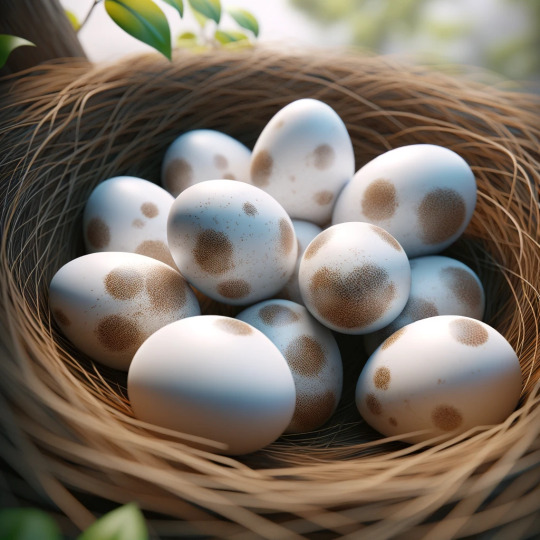
Bird eggs, with their myriad shapes, sizes, and colors, are a marvel of nature's craftsmanship. Among the various patterns and hues that adorn these delicate treasures, one particular design stands out – eggs that are white with brown spots. In this article, we delve into the artistry of nature's canvas and explore the intriguing world of bird eggs featuring this exquisite coloration.
A Palette of Possibilities
Birds, with their incredible diversity, have evolved a stunning array of eggshell colors and patterns. While some lay eggs in solid colors or subtle pastels, others opt for striking designs. Eggs with brown spots on a white background fall into the latter category.
The Science Behind the Spots
The spots on bird eggs serve a dual purpose – camouflage and protection. The speckled pattern helps conceal the eggs from predators and blends into their surroundings. Additionally, the spots can vary in size and distribution, making each egg unique.
Who Lays Eggs with Brown Spots?
Numerous bird species around the world produce eggs with this captivating pattern. Some well-known examples include:
House Sparrow (Passer domesticus)
House Sparrows, often found in urban areas, lay small, white eggs adorned with tiny brown speckles. These spots help them blend into their nest environments. It is a common bird that is easily recognizable and widely found across many parts of the world.
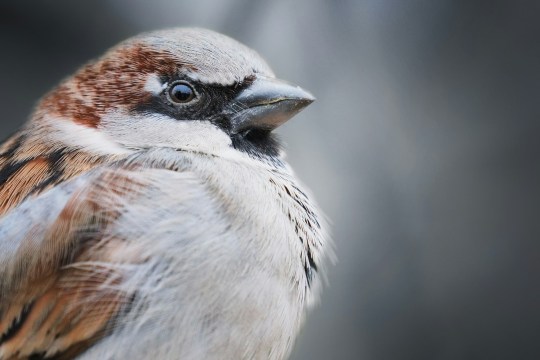
Here's some detailed information about them, especially focusing on their eggs:
Physical Description: House Sparrows are small birds, typically about 16 cm (6.3 inches) in length. They have a stout body, a rounded head, and a robust, conical beak. The males usually have a gray head and a black bib, while females and young sparrows are more of a brown and gray color with no black markings.
Habitat and Distribution: These birds are highly adaptable and can live in a variety of habitats, but they are most commonly found in urban and suburban areas. Originally native to parts of Europe and Asia, they have been introduced to many other parts of the world, including North America, Australia, and Africa.
Behavior and Diet: House Sparrows are known for their sociable nature. They often gather in large flocks and can be seen feeding together. Their diet mainly consists of seeds and grains, but they are opportunistic feeders and will also eat insects and scraps of human food.
Breeding and Nesting: House Sparrows are known for their versatility in nesting. They often build their nests in the nooks and crannies of houses, as well as in trees and bushes. The nests are made from grass, feathers, paper, and other materials.
Eggs: Regarding their eggs, House Sparrows typically lay white eggs with brown spots. The size of the egg is about 20 mm x 15 mm (0.79 inches x 0.59 inches). A typical clutch consists of 3 to 5 eggs.
Incubation and Fledging: The incubation period for House Sparrow eggs is about 10 to 14 days, and it's usually the female who incubates the eggs. The hatchlings are altricial, meaning they are born blind and without feathers. Both parents feed the chicks, and they fledge (leave the nest) about 14 to 16 days after hatching.
Conservation Status: Although House Sparrows are abundant and often considered pests in many areas due to their adaptability and large populations, in some parts of the world, notably parts of Europe, their numbers have been declining due to changes in urban environments and farming practices.
House Sparrows play an interesting role in the ecosystems they inhabit, often influencing local bird populations and competing with native species. Their ability to thrive in human-altered landscapes makes them one of the most recognizable bird species around the world.
Eastern Bluebird (Sialia sialis)
Eastern Bluebirds, known for their stunning azure plumage, lay eggs with pale blue shells adorned with subtle brown markings. It is a small North American songbird, admired for its beautiful colors and sweet song.
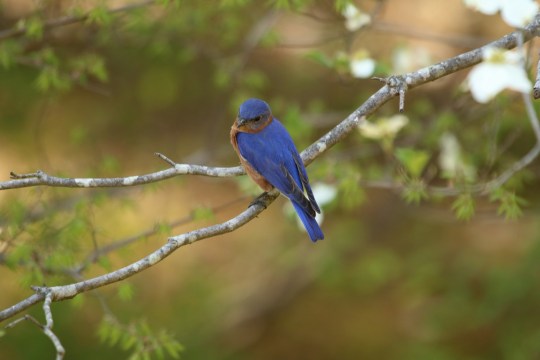
Here are some detailed aspects about them:
Physical Description: Eastern Bluebirds are medium-sized, mostly ranging from 16 to 21 cm (6.3 to 8.3 inches) in length. They have a distinctive royal blue plumage on their back and head, and a rusty or brick-red color on their throat and breast. Females are less brightly colored than males, with more of a grayish tone mixed with blue and orange.
Habitat and Distribution: These birds are found in open country across eastern North America and south as far as Nicaragua. Habitats preferred by Eastern Bluebirds include fields and open areas with scattered trees, orchards, and suburban areas. They are often seen perching alone on wires or posts.
Behavior and Diet: Eastern Bluebirds are insectivorous and feed mainly on insects and other invertebrates. During the fall and winter, they shift more to eating small fruits and berries. They are known for hunting by dropping to the ground onto insects from a perch.
Breeding and Nesting: Eastern Bluebirds are cavity nesters. They often use abandoned woodpecker holes or nest boxes. The nests are built by females and are made of grass and sometimes pine needles and other plant materials.
Eggs: The eggs of the Eastern Bluebird are pale blue or, occasionally, white, without any spots. Each clutch usually contains about 4 to 5 eggs.
Incubation and Fledging: The female incubates the eggs for about 14 to 16 days. The young are altricial at birth, meaning they are blind and featherless. Both parents feed the chicks. The young fledge (leave the nest) approximately 15 to 20 days after hatching.
Conservation Status: The Eastern Bluebird was once in decline, due to habitat loss and competition for nesting sites with the House Sparrow and European Starling. However, conservation efforts, including the provision of nest boxes, have helped their numbers increase.
Eastern Bluebirds are often a symbol of happiness and cheerfulness in American culture. Their recovery from near-threatened status is a success story for conservationists and bird lovers. They continue to delight people with their presence and song in their native habitats.
Northern Mockingbird (Mimus polyglottos)
Northern Mockingbirds produce creamy-white eggs adorned with fine brown spots. Their intricate nests are often concealed within shrubs. It is a well-known and widely recognized bird species, particularly famous for its vocal abilities.

Here's some detailed information about the Northern Mockingbird:
Physical Description: Northern Mockingbirds are medium-sized birds, generally measuring about 23 to 28 cm (9 to 11 inches) in length. They have a slim, streamlined body, long legs, and a long tail. Their plumage is primarily gray and white. The wings have white patches which are visible in flight.
Habitat and Distribution: These birds are native to North America and can be found in the United States, Mexico, and parts of Canada. Northern Mockingbirds prefer open areas with sparse vegetation, including suburban and urban settings, parks, gardens, and forest edges.
Behavior and Diet: Known for their singing ability, male Northern Mockingbirds can sing over 200 different songs, including imitations of other birds and even mechanical noises. They are omnivorous, feeding on insects, berries, and seeds. They are often observed foraging on the ground.
Breeding and Nesting: Northern Mockingbirds are monogamous during the breeding season. They build nests using twigs, leaves, grass, and other materials, usually in shrubs or trees. The nest building is primarily done by the female.
Eggs: The eggs of the Northern Mockingbird are light blue or greenish, with brown spots. A typical clutch contains 2 to 6 eggs.
Incubation and Fledging: The incubation period lasts about 12 to 13 days, and it is the female that incubates the eggs. The young are altricial at birth. Both parents feed the chicks, and the young leave the nest about 11 to 12 days after hatching, though they are still cared for by the parents for some time after fledging.
Conservation Status: The Northern Mockingbird is listed as of Least Concern by the IUCN. It is a common species with a stable population trend. However, like many birds, they are affected by habitat loss in some areas.
The Northern Mockingbird's ability to mimic a vast array of sounds, along with its adaptability to various environments, makes it a fascinating and prominent bird in its natural habitat. Its cultural significance is notable, being the state bird of several U.S. states and a frequent subject in literature, music, and folklore.
European Starling (Sturnus vulgaris)
European Starlings lay eggs that are pale blue-green with small brown speckles. These cavity-nesting birds have adapted to various habitats.It is a small to medium-sized passerine bird that is notable for its iridescent plumage and its remarkable ability to mimic sounds.
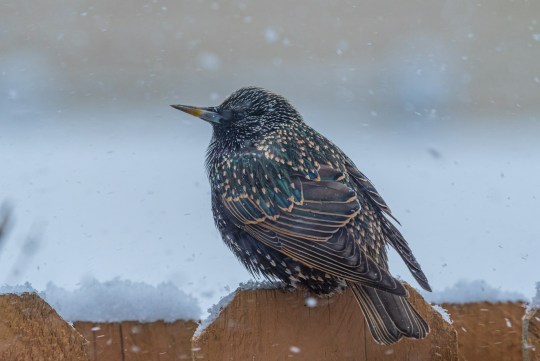
Here's a detailed overview of the European Starling:
Physical Description: European Starlings are about 20 cm (8 inches) long and have a stout build. Their plumage is glossy and iridescent, featuring a range of colors from green to purple, depending on the light. In the winter, their feathers are tipped with white, giving them a speckled appearance, which changes to a more uniform glossy sheen in the summer. They have a pointed bill that is dark in winter and yellow in summer.
Habitat and Distribution: Originally native to Eurasia, European Starlings have been introduced to numerous other regions, including North America, Australia, New Zealand, South Africa, and elsewhere. They are highly adaptable and can thrive in a wide range of habitats, including urban areas, farmlands, and open woodlands.
Behavior and Diet: European Starlings are gregarious birds, often seen in large flocks. They are known for their aerial displays, especially before they roost in the evenings. Their diet is varied and includes insects, fruits, seeds, and human-provided scraps.
Breeding and Nesting: Starlings are cavity nesters, often occupying holes in trees, but also readily using nest boxes or gaps in buildings. The nests are made from grass, leaves, and twigs. They can be quite aggressive in securing nesting sites, often displacing other cavity-nesting birds.
Eggs: The eggs of the European Starling are pale blue or greenish-white and usually number between 4 and 6 per clutch.
Incubation and Fledging: The female incubates the eggs for about 12 days. The chicks are altricial, meaning they are born blind and featherless. Both parents feed the chicks, which fledge about 21 days after hatching but may remain dependent on their parents for a further 2 weeks.
Conservation Status: In its native range, the European Starling is considered of Least Concern by the IUCN, though there are indications of population declines in parts of Europe. In introduced regions, they are often considered pests due to their impact on native species and agriculture.
European Starlings are notable for their vocal mimicry, capable of imitating a wide variety of sounds, including the songs of other bird species, alarms, and machinery. Their adaptability to human-modified landscapes has contributed to their widespread presence and the complexities associated with their management in non-native regions.
The Evolutionary Advantage
The evolution of speckled eggs is a fascinating example of nature's ingenuity. The spots provide an evolutionary advantage by helping eggs blend into their surroundings, making them less conspicuous to potential predators.
Aesthetic Appeal
Beyond their functional role, eggs with brown spots captivate our imagination. They are nature's miniature masterpieces, offering a glimpse into the intricate design work that goes into each bird's reproductive process.
Conclusion
Bird eggs with a white background and brown spots are not only a testament to nature's artistry but also a marvel of adaptation. These exquisite patterns serve as both camouflage and protection for the fragile embryos within. As we marvel at the beauty of these eggs, let us also appreciate the remarkable evolutionary journey that has led to their creation, a testament to the intricate balance of life in the avian world.
FAQs
What bird lays white eggs with brown spots?
Various bird species, including House Sparrows and Eastern Bluebirds, lay white eggs with brown spots.
What are the brown spots on egg whites?
The brown spots on eggshells serve the dual purpose of camouflage and protection, helping eggs blend into their surroundings and evade predators.
What lays brown spotted eggs?
Numerous bird species worldwide produce brown spotted eggs, showcasing the diversity of avian reproduction.
Why do bird eggs have spots?
Bird eggs have spots to provide camouflage and protection, helping them avoid detection by potential predators and ensuring the survival of the species.
Read the full article
0 notes
Text
Prompt #7: Serendipitous
(CW: mentions of dead bodies, drowning)
Seafoam frothed around Bluebird’s shins as she waded through the remains of a recent shipwreck, not yet picked at the numerous vultures that roamed along the Ruby Sea coastline. It looked to be a medium-sized ship, either a small merchant vessel that got extremely lost, or a swift privateering one from Vylbrand that caught the Confederates in a bad mood. The smashed hull was clamped tight between twin jagged rocks that jutted out of the shallows like fangs, dull grey and biting deep into the shattered wood. The masts were completely gone, snapped off like twigs, and littering the coast, being gently lapped ashore by the placid tide, were numerous crates, boxes and bodies.
Quite a lot of bodies.
One particular corpse bobbed close by Bluebird, and she waded in a bit deeper to take a closer look. The body was fresh enough that it hadn’t bloated yet, but it was still a little ripe as she rolled it over onto its back. A swarthy Roegadyn, clearly drowned, dressed in light armour with a firearm still holstered to his belt. Bluebird purloined that quick.
“Limsan,” she decided, pushing the corpse away once she realised there was nothing else of value on it. She recognised the tattoo on his bicep, “More of them around here these days.”
Hooking her new pistol to her belt after checking it over – a bit waterlogged, but after some drying and quick maintenance, it should be workable – Bluebird moved further down the coastline, the wrecked ship an ominous shadow looming in her peripheral.
“Oi, Aza,” she called, rounding a cluster of crates that had been dragged onto the beach proper. In the middle of this sort-of circle of ill-gotten cargo, her brother was leaning deep into an opened crate so the only thing she could see was his wriggling bum and swishing tail, “Find anything good?”
“Nothing yet,” Aza sighed, his voice echoing oddly within the crate before he straightened up. He swiped his damp brow with the back of his hand, his fingers scratched and reddened from forcing open the crate’s nailed shut lid, “This one’s just full of clothes.”
Bluebird peeked inside. Bright fabrics met her gaze, Kugane silk at that. Odd thing for Limsan pirates to deal in, but from what she understood, Eastern commodities sold well in Eorzea. Not that these silks were worth anything now – the saltwater had gotten in and unless Bluebird felt like vigorously washing them, they would stink or rot within a month.
“Some of the bodies have pistols,” Bluebird said as Aza moved to the next crate, carefully prying the lid off of it with amazing strength. He always was freakishly strong, “Limsan pistols at that. I know a few people who’ll pay a lot just to examine the metallurgy.”
“Oh?” Aza grunted distractedly, finally wrenching the lid free, “How come?”
“Their metal doesn’t rust in saltwater,” Bluebird said, “Or, it resists rust a lot better than normal metals. Some Kobold trick they stole, I hear.”
“Interesting,” Aza said in a tone that said otherwise, “Oh, hey, look at this.”
Bluebird obligingly peered in – and blinked, “Is that an egg?”
“A really big egg,” Aza said, leaning down and picking it out from the waterlogged nest of straw at the bottom of the crate. The egg was the size of Aza’s head, and he needed both hands to hold it – judging by how his biceps flexed, there was quite a bit of weight to it too, “I wonder what’s in here…?”
“A dragon?” Bluebird suggested, curiously eyeing the egg. It was a soft creamy colour, with pale blue speckling along the top. There were no cracks or signs of stress on the shell, and it hadn’t been bobbing in the water for long either – the sea was warm this time of year too, so the offspring inside should still be viable, “One of those weird Eorzean horsebirds?”
Aza perked up at that – then frowned, “Why would they bring a horsebird with them to here?”
“Trading. Quite a lot of these Limsans sell their shit in Kugane before going back home,” Bluebird said. Or, well, that’s what the Confederates said. You couldn’t raid Garlean shipping lanes too much, because they would just place more ships to guard the routes, eventually making it too dangerous to privateer. Instead, they tended to terrorise them for a bit, and then shift to regular trading in Kugane until the Imperials became complacent again. Rinse and repeat.
“Hm,” Aza studied the egg for a moment more, his expression contemplative, “I think I’ll keep it.”
Bluebird let out an ugly sounding snort, “Really? Where you gonna keep it if it hatches? Don’t think the boss would be too keen having a giant horsebird taking up room back at base.”
“Boss has been complaining about how hard it is to get good mounts nowadays,” Aza said. It was true – any fit and healthy horses or ponies were claimed by the Imperials for their ongoing ‘efforts towards modernising Othard’. That meant the only mounts left were the lame and old, useless if you needed a swift steed to deliver messages. Bluebird tried smuggling a Steppe pony to Doma once – but Doma’s climate didn’t agree with it very well, or the plant life, and it didn’t last long.
Horsebirds on the other hand… they were renowned for being hardy creatures, able to survive in multiple types of environments – alongside monsters too! They weren’t as fast as a horse, but they made up for it with sturdiness and the ability to fight back with those powerful and deadly kicks.
“I’m keeping it,” Aza repeated, hefting it into a more comfortable hold in his arms, “I mean, otherwise it’ll die and that’ll be a big waste.”
“We could eat it,” Bluebird suggested, “It looks like it could make a good omelette.”
“We are not eating it,” Aza huffed, fluffing up indignation, “It’s a baby!”
“More like emergency rations,” Bluebird drawled – then grinned when an idea dawned, “Oh, that’s what you can call it! Emergency Rations!”
“We’re not calling it Emergency Rations.”
“Yeah, it’s a bit of a mouthful. How about Rations for short?”
“We’re not calling it Rations!”
---
When the egg hatched a week later, thanks to Bluebird’s swift action of positive reinforcement via tasty gyshal greens, the only name the chick responded to was ‘Rations’, despite Aza’s attempts to make it respond to ‘Azimi’.
Honestly, watching her brother sulk and pout and huff every time his horsebird chick responded to ‘Rations’ was well worth the pain of said horsebird insistently shitting on her boots. So, very, worth it.
9 notes
·
View notes